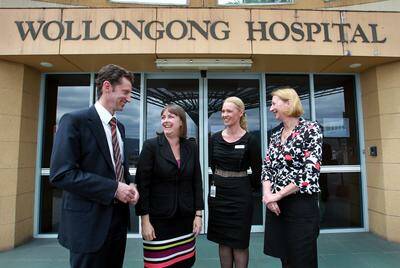
Wollongong Hospital will trial a new way of handling crippling ambulance congestion - however, it comes with an enormous price tag.Ambulance Release Teams will operate from mid-December after it was revealed the hospital had the longest ambulance waiting times in NSW during winter.More than 1000 patients were kept waiting in hallways for up to six hours before being found beds in the emergency department (ED), putting paramedics out of action for thousands of hours.An Ambulance Release Team (ART) consists of two off-duty paramedics paid overtime to monitor up to three stretcher patients during busy waiting periods.It helps on-duty crews get back on the road but does not solve the cause of the delays - a lack of beds.Release teams are expensive - the Ambulance Service of NSW will charge Wollongong Hospital between $132 and $230 per hour.Last year, Westmead Hospital was charged $396,157, Gosford Hospital $159,634, Prince of Wales $147,951 and Liverpool Hospital $118,145.Illawarra Shoalhaven Local Health District board chairman Professor Denis King said the cost would have to be found within the existing budget.‘‘Getting extra resources, extra beds and looking at how we better treat and manage patients is all long-term stuff over the next two or three years. We need to do things in the interim to deal with the short-term problem,’’ he said.A health district spokeswoman yesterday said Wollongong Hospital’s average off-stretcher time was now 44 minutes compared with an average of 57.8 minutes for August, the peak of winter demand.Ninety per cent of arrivals are meant to offloaded within 30minutes but just 39.4 per cent were in August.That rate rose to 45.5 per cent in September and 49.9 per cent in October but still remains well below target.The spokeswoman said some pressure could be relieved if ambulances were used solely for emergencies.‘‘A common misconception is that patients who arrive via ambulance are seen ahead of those patients who walk in,’’ she said.‘‘All patients who present to ED are triaged accordingly and those who are most seriously ill are treated first regardless of their mode of arrival.’’The ART scheme has been used in hospitals in metropolitan Sydney, the Central Coast and Newcastle for several years.Positive step: Page 20
Subscribe now for unlimited access.
$0/
(min cost $0)
or signup to continue reading

